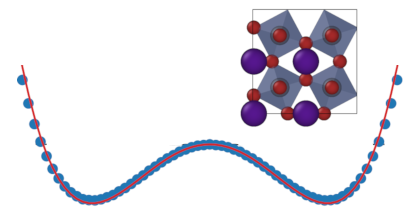Highly efficient path-integral molecular dynamics simulations with GPUMD using neuroevolution potentials: Case studies on thermal properties of materials
P. Ying,
W. Zhou,
L. Svensson,
E. Berger,
E. Fransson,
F. Eriksson,
K. Xu,
T. Liang,
J. Xu,
B. Song,
S. Chen,
P. Erhart,
and
Z. Fan
arXiv:2409.04430
doi: 10.48550/arXiv.2409.04430
zenodo: 13712924,
10257363
(associated data)
Download PDF

Path-integral molecular dynamics (PIMD) simulations are crucial for accurately capturing nuclear quantum effects in materials. However, their computational intensity and reliance on multiple software packages often limit their applicability at large scales. Here, we present an integration of PIMD methods, including thermostatted ring-polymer molecular dynamics (TRPMD), into the open-source GPUMD package, combined with highly accurate and efficient machine-learned neuroevolution potential (NEP) models. This approach achieves almost the accuracy of first-principles calculations with the computational efficiency of empirical potentials, enabling large-scale atomistic simulations that incorporate nuclear quantum effects. We demonstrate the efficacy of the combined NEP-PIMD approach by examining various thermal properties of diverse materials, including lithium hydride (LiH), three porous metal-organic frameworks (MOFs), liquid water, and elemental aluminum. For LiH, our NEP-PIMD simulations successfully capture the isotope effect, reproducing the experimentally observed dependence of the lattice parameter on the reduced mass. For MOFs, our results reveal that achieving good agreement with experimental data requires consideration of both nuclear quantum effects and dispersive interactions. For water, our PIMD simulations capture the significant impact of nuclear quantum effects on its microscopic structure. For aluminum, the TRPMD method effectively captures thermal expansion and phonon properties, aligning well with quantum mechanical predictions. This efficient NEP-PIMD approach opens new avenues for exploring complex material properties influenced by nuclear quantum effects, with potential applications across a broad range of materials.



